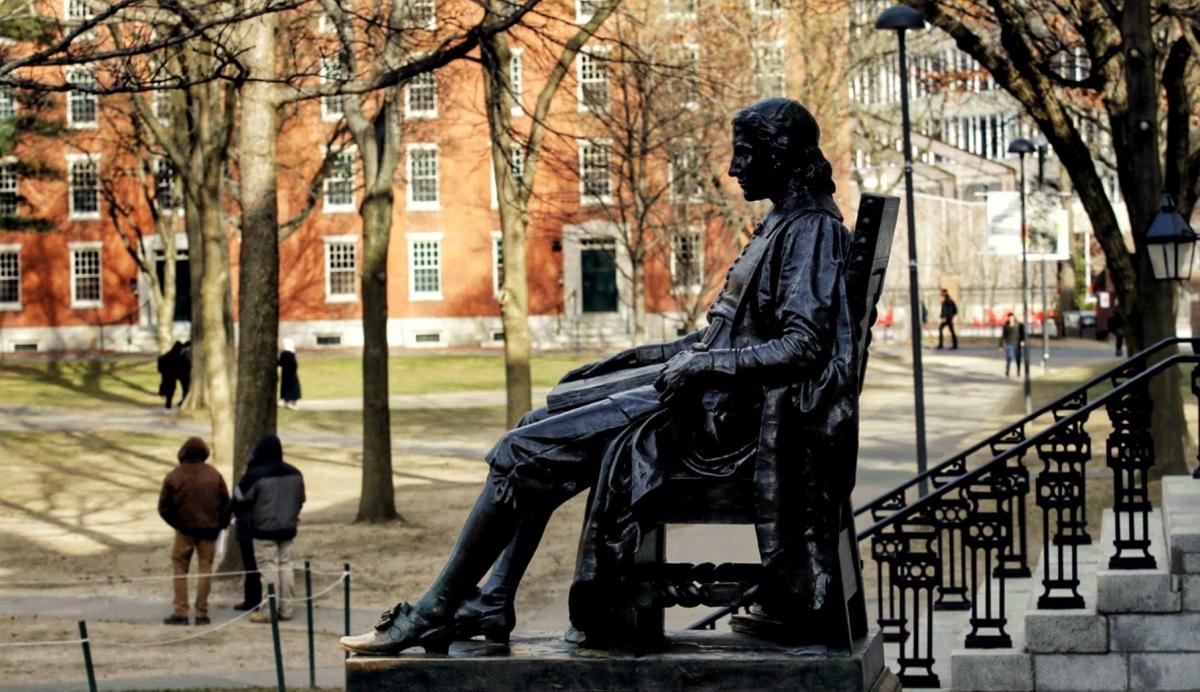By Bill Kelly, CEO, CAIA Association
While Harvard the institution is legendary, much less is known about its founding other than by some who have taken those tedious Cambridge tours or the gifted alum who studied their way in through one of those 25 famous gates. Harvard College was founded in 1636 via a Colonial legislative decree but, like most government actions, it was left wanting in many ways: it had no money, no building, no instructors, and no students. Perhaps even more of a plot twist, John Harvard knew nothing about this situation as he was then a 28-year-old minister living in England having never crossed the Atlantic before. John Harvard came to America the following year (1637) but would die in Newtone (now Cambridge, MA) just one year later at the age of 30. He left a 400-volume scholarly library and £780 to this legislated shell and it was game-on for the future Baker Scholars.
Clearly John Harvard had no idea what his legacy would mean almost 400 years later. The Harvard University Financial Report for Fiscal 2019 was recently released and it is a fascinating read that goes far beyond the simple compounding of young John’s £780. Harvard today boasts $60B of assets with an annual operating budget of more than $5B, half of which is for payroll, and another almost 20% goes toward the cost to maintain the sprawling campus, but only about 13% of this annual nut is covered by tuition payments. Enter the Harvard Management Company—the $41B university endowment representing two thirds of the university’s assets. It is the largest single source of funding for the annual operating budget at a cool $2B (or almost 40%) of the yearly costs to run the house that John built.
Given the law of large numbers, it is no wonder the DNA of the endowment is all over the 43 pages of this report but here is some advice for the time-challenged. The CIO letter can be found on pages 12-16 and it is a fascinating and exceedingly transparent exposé that shows how to think and act like an investor. The pressure on this office must be enormous as the shadow of the University is back every year, hat-in-hand needing to take 5% of the corpus or what is today $2B. The operational expense side of that ledger is mostly fixed costs growing via expansion and inflation so there is no “return to sender” option when that bill comes due, every single year! For fiscal 2019, the popular press will say that the endowment underperformed the competition (the other Ivy’s) but they did beat the “institutional” 5% bogey even if it was only by a very skinny 150 basis points on an allocation plan that has about two-thirds of the assets in alternative investments.
The rest of the discovery and gems are up to you to explore (check out Footnote 3 on Investments too) but do pay particular attention to the radical transparency in the discussion about the illiquid part of the portfolio. It is here where you will see the challenges and opportunities of write-downs, compensation for risks and lack of liquidity, the uniqueness and secular characteristics of alpha, vintage-year diversification, and the nature of the J-curve, just to cite a few. The cynic might say there is nothing new to see here, but the patient and diligent thought process described therein is so rarely followed in the capital markets these days. This office is managing through a sea of longer term risks and unpredictable volatility. Yet, they must deliver an absolute certain and growing annual capital call from an almost 400-year-old institution whose very being depends on the consistency of their investment performance, into perpetuity. How’s that for pressure?
You might need a high SAT score, unusual skills, a clever college counselor, or very rich relatives to get through those gates as a student, but it only takes conviction and discipline to follow their “funding” principles.
Seek diversification, education, and know your risk tolerance. Investing is for the long term.
Bill Kelly is CEO of CAIA Association. Follow Bill on LinkedIn and Twitter.




